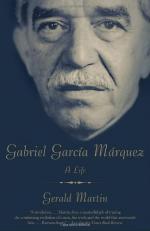|
This section contains 9,084 words (approx. 31 pages at 300 words per page) |

|
SOURCE: Spiller, Elizabeth A. “‘Searching for the Route of Inventions’: Retracing the Renaissance Discovery Narrative in Gabriel García Márquez.” CLIO 28, no. 4 (summer 1999): 375-98.
In the following essay, Spiller examines the “mythic and historical” aspects of One Hundred Years of Solitude, arguing that the novel “emerges out of a Renaissance genre which used myth to create what then became history while it also transformed existing history into a form of myth.”
If, as Harold Bloom suggests, One Hundred Years of Solitude (1967) is a “supreme fiction,” it achieves that status as it reformulates early modern narratives of self-discovery and dominion.1 García Márquez signals his intention of rewriting the great Renaissance narratives of discovery when he begins his 1982 Nobel Prize acceptance speech with an account of Antonio Pigafetta's Viaggio attorno al mondo (1522). As a navigator aboard Magellan's 1519-21 voyage around the world, Pigafetta kept a log that...
|
This section contains 9,084 words (approx. 31 pages at 300 words per page) |

|


